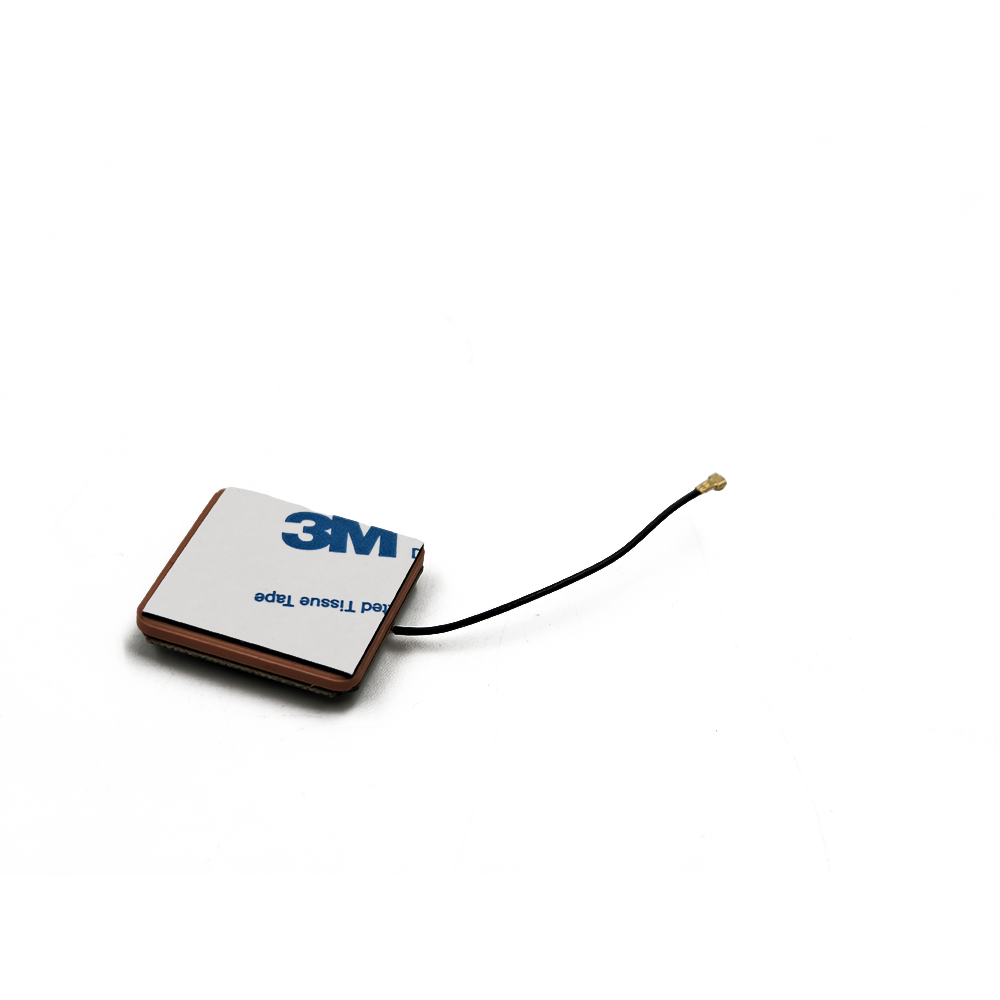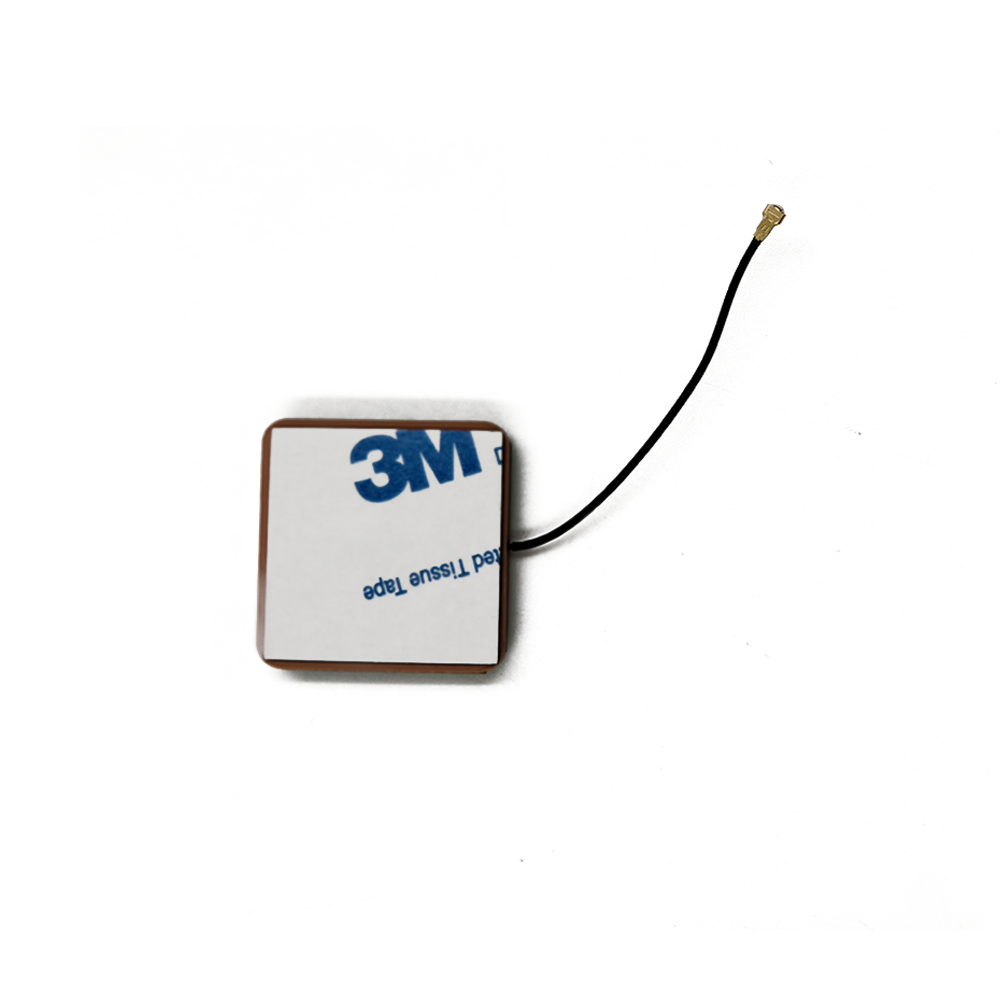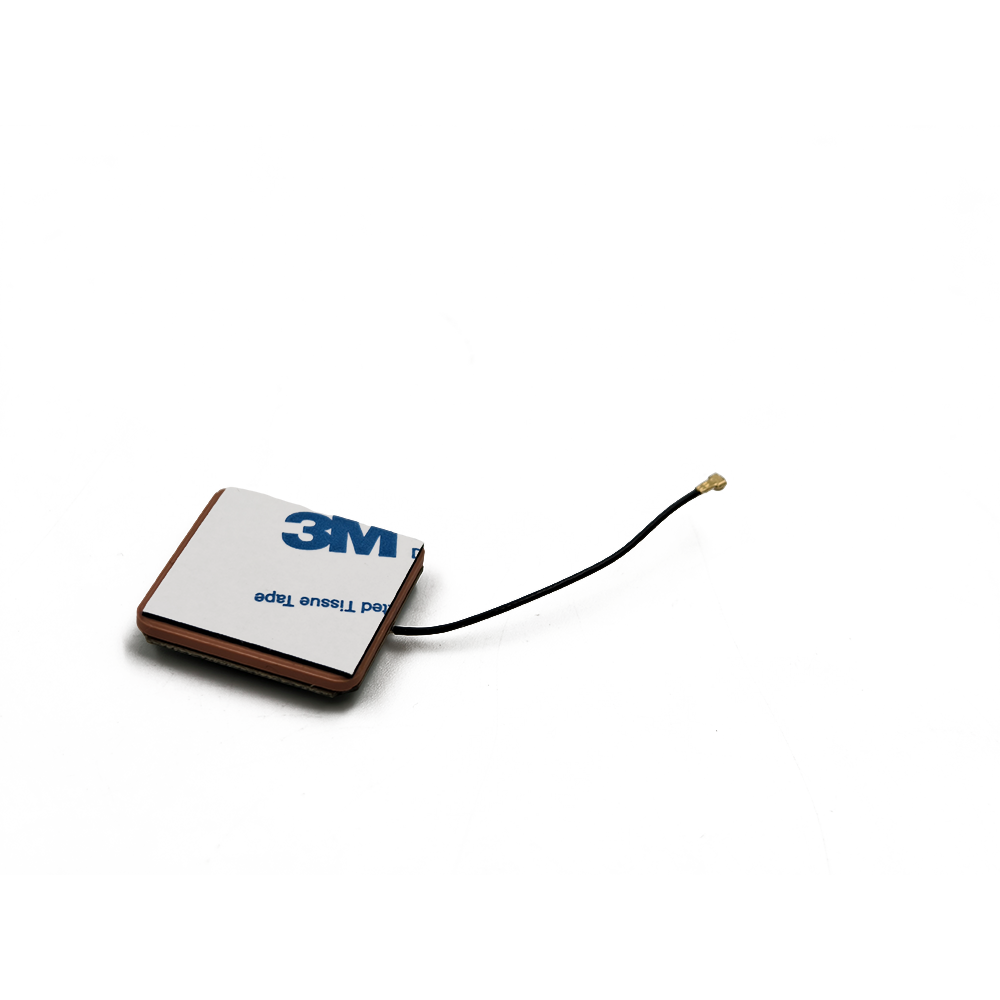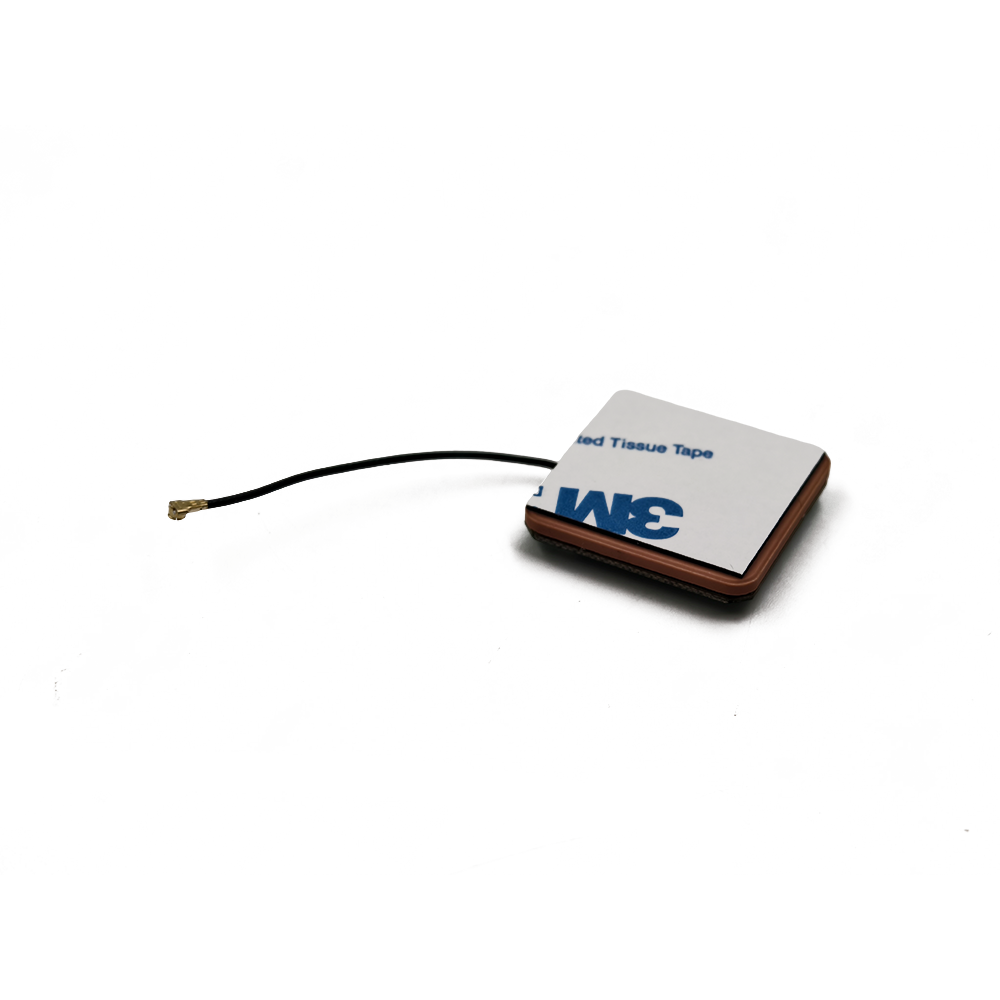defining feature of this antenna
A defining feature of this antenna is its passive pin feed connectivity, a design choice that prioritizes signal integrity and simplicity. Unlike active antennas that incorporate amplifiers, passive antennas rely solely on their physical design to capture and transmit signals, eliminating the risk of noise introduced by active components. The pin feed mechanism—where a conductive pin connects the ceramic patch to the feed network—ensures a direct, low-loss path for RF signals, maximizing the efficiency of signal transfer from the antenna to the RTK receiver. This simplicity is particularly valuable in RTK applications, where even minor signal degradation can compromise positioning accuracy. By avoiding active components, the antenna also reduces power consumption, making it suitable for battery-powered devices such as portable surveying equipment or drones, where extended runtime is critical.
The material at the heart of this antenna is a ceramic patch, a choice that underpins its high performance in RTK applications. Ceramic is prized for its high dielectric constant (typically between 20 and 100), which allows the antenna to achieve a compact form factor while maintaining efficient radiation at GNSS frequencies. This high dielectric constant reduces the wavelength of the signal, enabling the antenna to be significantly smaller than antennas made with lower dielectric materials like plastic or metal. For RTK systems, which often require integration into compact devices, this miniaturization without performance loss is a key advantage. Additionally, ceramic exhibits excellent thermal stability, ensuring that the antenna’s electrical properties—such as resonant frequency and impedance—remain consistent across temperature extremes, a critical feature for reliable operation in harsh environments.
The antenna employs right-hand circular polarization (RHCP), a critical attribute for maximizing signal reception in dynamic RTK applications. GNSS satellites transmit signals with RHCP, and using an RHCP antenna ensures that the received signal strength is maximized, as polarization matching minimizes signal loss. Unlike linear polarization, which is sensitive to the antenna’s orientation relative to the satellite, RHCP maintains consistent performance even when the antenna is tilted, rotated, or subjected to movement—common scenarios in applications like drone surveying or agricultural machinery operation. RHCP also helps mitigate multipath interference, where signals reflect off surfaces such as buildings, trees, or the ground before reaching the antenna. Reflected signals often have left-hand circular polarization (LHCP), which is attenuated by an RHCP antenna, reducing noise and improving the accuracy of RTK calculations.
four key frequency bands
The antenna operates across four key frequency bands: GPS L1, GPS L5, BeiDou B1, and GLONASS G1, ensuring compatibility with major global navigation satellite systems (GNSS). This multi-constellation support is essential for RTK applications, as it increases the number of visible satellites, enhancing positioning accuracy and reliability, especially in challenging environments.
GPS L1 (1575.42 MHz) is the primary civilian GPS frequency, widely used in navigation systems worldwide.
GPS L5 (1176.45 MHz) is a newer, more robust frequency with better resistance to interference and improved accuracy, making it valuable for high-precision applications.
BeiDou B1 (1561.098 MHz) is the main frequency for China’s BeiDou system, providing enhanced coverage in the Asia-Pacific region.
GLONASS G1 (1602 MHz) supports Russia’s GLONASS constellation, which is particularly strong in high-latitude regions.
By covering these frequencies, the antenna ensures that RTK systems can leverage signals from multiple constellations, reducing the risk of signal loss and enabling consistent centimeter-level accuracy across diverse geographic regions.
With patch dimensions of 35356.12 mm, the antenna strikes a balance between compactness and performance. The 35mm x 35mm footprint provides sufficient surface area for the ceramic patch to radiate efficiently across its frequency bands, while the 6.12mm thickness allows for integration into slim devices such as drone payloads, surveying rovers, or agricultural sensors. This compact size is particularly valuable for applications where space is limited, as it allows the antenna to be mounted without obstructing other components or compromising the device’s aerodynamics—critical for drones or autonomous vehicles. Despite its small size, the antenna’s design ensures that it maintains a broad radiation pattern, enabling it to capture signals from satellites across a wide range of elevations.
The antenna’s weight of 26g further enhances its suitability for portable and airborne applications. For drones, reducing weight is essential for maximizing flight time and maneuverability, and the 26g ceramic patch adds minimal burden compared to larger, heavier antennas. Similarly, for handheld surveying equipment, a lightweight antenna reduces user fatigue during extended fieldwork. This low weight is achieved without sacrificing durability, as the ceramic material provides inherent strength and resistance to physical impacts, ensuring that the antenna can withstand the rigors of outdoor use.
VSWR (Voltage Standing Wave Ratio) is specified as 2:1 to 4:1 depending on the band, a range that reflects the antenna’s performance across its diverse frequency bands. VSWR measures how efficiently the antenna transfers power to and from the connected receiver, with lower values indicating better performance. For the GPS L1 and L5 bands, which are critical for high-precision positioning, the VSWR is closer to 2:1, ensuring efficient signal transfer. For other bands, such as GLONASS G1, the VSWR may be higher (up to 4:1) due to the challenges of maintaining optimal performance across a broad frequency range. Despite these variations, the antenna’s VSWR remains within acceptable limits for RTK applications, ensuring that sufficient signal strength is maintained to enable accurate positioning calculations.
The antenna delivers a peak gain of up to 4.03 dBi, a specification that reflects its ability to amplify weak satellite signals. Gain in RTK antennas is carefully balanced to provide sufficient amplification without narrowing the radiation pattern excessively. A gain of 4.03 dBi ensures that even faint signals from low-elevation satellites— which are critical for RTK accuracy—are amplified to a level that the receiver can process effectively. This gain is achieved through the precise design of the ceramic patch and its interaction with the ground plane, ensuring that energy is focused in the direction of the sky where satellites are located. For RTK systems, which rely on detecting small changes in signal phase to calculate position, this gain is essential for maintaining the signal-to-noise ratio required for centimeter-level accuracy.
With an efficiency of up to 79.93%, the antenna maximizes the conversion of input power into radiated signals (and vice versa for received signals). Efficiency is a critical metric for RTK antennas, as it directly impacts the antenna’s ability to capture weak signals and transmit them to the receiver with minimal loss. A high efficiency of 79.93% ensures that most of the energy from the satellite signal is transferred to the receiver, reducing the need for excessive amplification that could introduce noise. This efficiency is achieved through careful optimization of the ceramic patch design, including its thickness, dielectric constant, and the geometry of the pin feed. For RTK applications, where every decibel of signal strength matters, this high efficiency is a key factor in achieving reliable, high-precision positioning.
The axial ratio of 11.2-17.04 dB is a measure of how well the antenna maintains circular polarization. A lower axial ratio indicates better circular polarization, with a value of 0 dB representing perfect circular polarization. While the specified range is higher than ideal, it is acceptable for RTK applications, where the antenna’s RHCP is still effective at capturing satellite signals and mitigating multipath interference. The axial ratio varies across the antenna’s frequency bands, with better performance (lower values) in the primary bands like GPS L1. This ensures that the antenna maintains good polarization matching with satellite signals in the frequencies most critical for high-precision positioning.
antenna features
The antenna features an omnidirectional radiation pattern, meaning it radiates and receives signals equally well in all horizontal directions. This is particularly valuable for RTK applications where the antenna may be in motion or where satellite visibility is variable, such as in urban environments or rugged terrain. An omnidirectional pattern ensures that the antenna can capture signals from satellites in any azimuth, reducing the risk of losing lock on critical satellites. While the pattern may have some variation in gain at different elevations (typically with higher gain at higher elevations where most satellites are located), the overall omnidirectional characteristic ensures consistent performance regardless of the antenna’s orientation relative to the satellite constellations.
A ground plane size of 70*70 mm is recommended for optimal performance. The ground plane is a conductive surface (typically a metal plate or a PCB) that serves as a reference for the antenna’s radiation pattern, improving efficiency and reducing unwanted radiation in downward directions. The 70mm x 70mm ground plane is twice the size of the ceramic patch, ensuring that it provides adequate reflection and shielding to optimize the antenna’s performance. This ground plane can be integrated into the device’s housing or PCB, simplifying installation and ensuring that the antenna operates at its peak efficiency. For RTK systems, where even small improvements in signal quality can translate to better positioning accuracy, the proper ground plane size is a critical consideration.
The antenna’s operating and storage temperature range of -40°C to +85°C ensures reliable performance in extreme environmental conditions. This makes it suitable for use in a wide range of climates, from the freezing temperatures of polar regions to the scorching heat of desert environments. The ceramic material is inherently resistant to temperature-induced degradation, maintaining its dielectric properties and structural integrity across this range. The antenna’s other components, such as the pin feed and any mounting hardware, are also selected for their thermal stability, ensuring that the antenna can withstand rapid temperature changes without performance loss. This temperature resilience is particularly valuable for outdoor RTK applications, such as agricultural machinery operating in summer heat or surveying equipment used in winter conditions.
The ceramic RTK patch antenna’s design and specifications make it suitable for a diverse range of applications, each leveraging its high accuracy and durability. One key application is precision agriculture, where the antenna enables RTK-guided tractors, harvesters, and drones to perform tasks such as seeding, spraying, and harvesting with centimeter-level precision. This reduces waste, improves crop yields, and lowers operational costs. The antenna’s compact size and lightweight design make it easy to integrate into agricultural machinery, while its multi-constellation support ensures reliable performance in rural areas.
Surveying and mapping is another major application, where the antenna provides the high-precision positioning data needed for creating detailed topographic maps, construction site layouts, and land surveys. The antenna’s high efficiency and gain ensure that surveyors can achieve accurate results even in challenging environments, such as urban canyons or dense forests. The passive design reduces power consumption, allowing surveying equipment to operate for extended periods in the field.
Drone navigation and mapping benefit from the antenna’s compact size, lightweight design, and omnidirectional radiation pattern. Drones equipped with RTK systems use the antenna to maintain precise positioning, enabling them to capture accurate aerial imagery, inspect infrastructure, or deliver goods with pinpoint accuracy. The antenna’s temperature resilience ensures reliable performance during flights in extreme weather conditions, while its RHCP polarization minimizes signal loss during maneuvering.
Autonomous robotics relies on the antenna for precise localization, enabling robots to navigate complex environments such as warehouses, construction sites, and industrial facilities. The antenna’s multi-constellation support ensures that robots can maintain positioning accuracy even in areas with limited satellite visibility, while its passive design integrates seamlessly with the robot’s power-efficient systems.
Marine navigation is an emerging application, where the antenna provides RTK accuracy for boats and ships, enabling precise positioning for activities such as offshore construction, fisheries management, and search-and-rescue operations. The antenna’s durability and resistance to temperature extremes make it suitable for the harsh marine environment, where exposure to saltwater, humidity, and extreme temperatures is common.
In conclusion
-
In conclusion, the ceramic RTK patch antenna represents a pinnacle of precision engineering, combining the unique properties of ceramic materials with a thoughtful design to deliver high-accuracy positioning for RTK applications. Its passive pin feed ensures signal integrity and low power consumption, while its RHCP polarization and multi-constellation support maximize signal reception in diverse environments. The antenna’s compact size, lightweight design, and temperature resilience make it suitable for a wide range of applications, from precision agriculture and surveying to drone navigation and autonomous robotics. As the demand for centimeter-level positioning continues to grow across industries, the ceramic RTK patch antenna will remain a critical component, enabling the next generation of high-precision navigation systems.




































































 Language
Language
 En
En Cn
Cn Korean
Korean

 Home >
Home > 








 18665803017 (Macro)
18665803017 (Macro)













